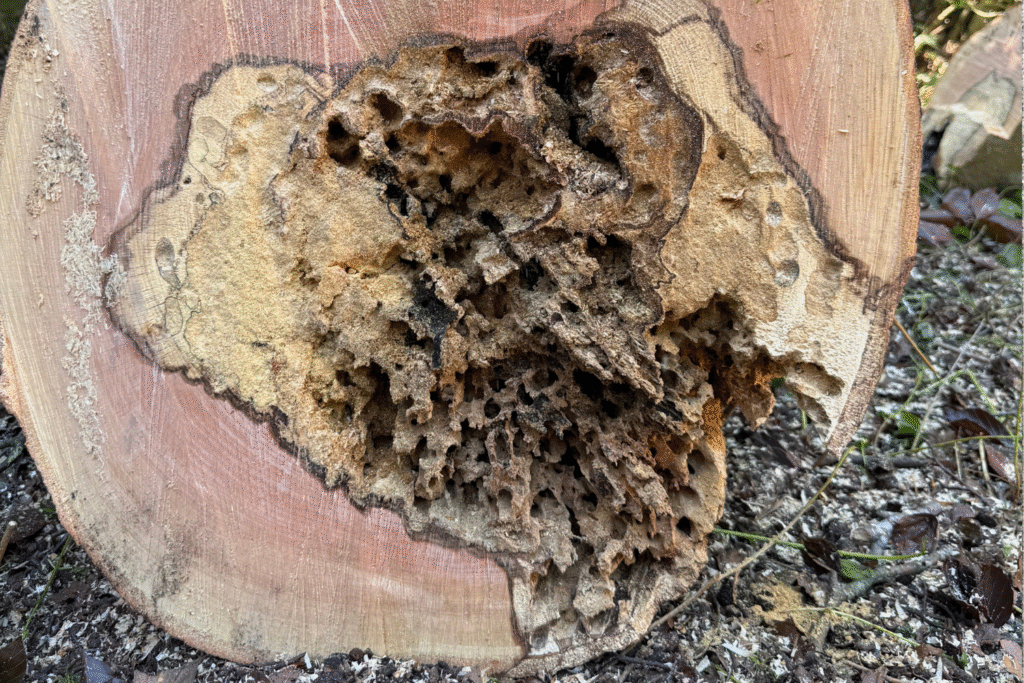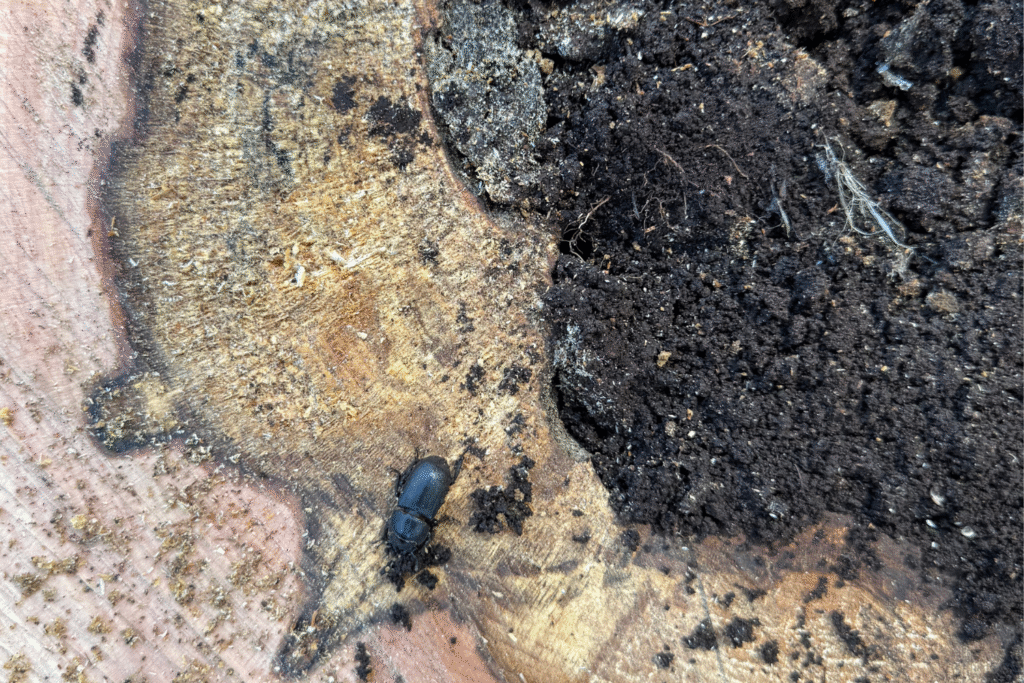Tree decay is the degradation of wood tissue, most often caused by fungal or bacterial pathogens. It weakens the internal structure of a tree, reducing its strength and stability. While decay is a natural part of a tree’s life cycle, in populated areas it can pose significant risks.
In urban and landscaped environments, trees are often located near buildings, footpaths, roads, and public gathering spaces. If decay progresses undetected, it can lead to branch drop or full tree failure—posing threats to life, property, and infrastructure.

Causes of Internal Tree Decay
Fungal Infections
The most common cause of decay in trees is fungal infection. Fungi enter through wounds in the bark or root system and begin breaking down the structural wood tissue. Pathogenic fungi like Ganoderma, Kretzschmaria deusta, and Armillaria are particularly aggressive.
Physical Damage and Wounds
Damage from pruning, construction, or vehicles can create entry points for decay organisms. Once internal tissues are exposed, decay can progress rapidly if not addressed.
Poor Tree Management
Incorrect pruning, lack of inspections, and failure to manage disease all contribute to the conditions that allow decay to develop and spread. Compacted soils or poor drainage can also promote root decay.
Why Internal Tree Decay Is Dangerous
Internal decay often remains hidden until advanced stages. A tree can look healthy externally while being structurally unsound within. This is particularly dangerous in areas where people or assets are nearby.
Decayed trees are more likely to:
- Drop large limbs unexpectedly
- Fail entirely during high winds or storms
- Pose legal liabilities to landowners under the Occupiers’ Liability Act
Understanding and detecting internal decay is therefore essential for effective tree risk management.
While internal decay is not always visible, several external signs can suggest internal problems:
- Fungal fruiting bodies at the base or on the trunk
- Cavities or hollows
- Cracks or seams in the bark
- Dead or dying limbs
- Mushy or discoloured wood
- Unusual swelling or bulging on the trunk
- Leaning with disturbed root zones
However, visual inspection alone is not always sufficient. Professional diagnostic tools are often required for accurate assessment.
Tools and Methods to Detect Internal Decay
Visual Tree Assessment (VTA)
This is the first step in any tree inspection. A trained arborist looks for symptoms of decay and structural instability. While it does not reveal internal conditions directly, it helps determine whether further testing is needed.
Benefits of Resistograph Testing
- Minimal invasiveness
- Provides a profile of internal density
- Useful for confirming decay behind suspicious features
Sonic Tomography
This advanced technique uses sound waves to map the internal structure of the tree. Sensors are placed around the trunk, and sound is passed through to detect voids or degraded wood.
Advantages of Sonic Tomography
- Non-invasive and accurate
- Visual map of internal structure
- Ideal for mature or high-value trees
Thermal Imaging
Infrared cameras detect temperature variations on the tree’s surface. Areas with abnormal heat signatures may indicate infection or decay.
Electric Resistance Tomography (ERT)
ERT measures internal moisture levels by passing electrical currents through the trunk. Decayed wood holds more moisture and shows up as high-conductivity zones.
These technologies are often used in combination to provide a reliable internal health profile of the tree.
When to Commission a Decay Inspection
You should request a decay inspection if:
- The tree is located in a high-risk area (e.g. near buildings or play areas)
- Fungal growth or cavities are visible
- The tree has suffered storm damage or root disturbance
- It has not been inspected in the last 12–24 months
- The tree appears stressed or in decline
- Regular inspection is vital for duty of care, especially for councils, estates, schools, and commercial landowners.

Managing Trees with Internal Decay
Once decay is confirmed, the next step is to assess the level of risk and decide on management actions. Not all decayed trees require removal—many can be retained with appropriate work.
Management Options Include:
- Targeted pruning to reduce loading on weak limbs
- Bracing or cabling to support compromised branches
- Monitoring and re-inspection
- Tree removal (only if risk is deemed unacceptable)
- The decision should be based on a formal risk assessment carried out by a qualified arboricultural consultant.
Conclusion
Tree decay is a serious issue that can compromise the safety and longevity of trees, especially in built-up areas. Internal decay is particularly challenging because it often develops silently and out of sight.
Modern detection tools such as resistographs, sonic tomographs, and visual assessments provide arborists with the data needed to make informed decisions. These assessments not only reduce the risk of failure but also help preserve valuable trees wherever possible.
Regular inspections and early detection are key to maintaining healthy, safe trees and protecting the people and structures around them.
If you suspect a tree on your site may be suffering from internal decay, it is essential to consult a qualified arboriculturist for an assessment and appropriate management plan.
London trees are essential to the landscape, air quality, and biodiversity, professional tree surveys play a critical role. They protect people, property, and the trees themselves.
Whether you’re planning a development, managing a school site, or buying a home near mature trees, a well-prepared tree survey is a small investment that delivers long-term peace of mind.
Choose a qualified London-based consultant who understands the local regulations, species, and urban challenges. With their expertise, you can make informed decisions that benefit both your project and the environment.
Call 07709 051535 or Email info@londontreesurveyconsultants.co.uk to Book Your Tree Survey Today






